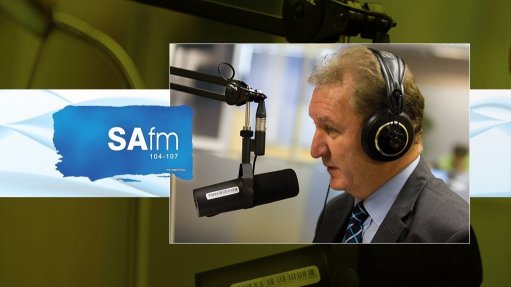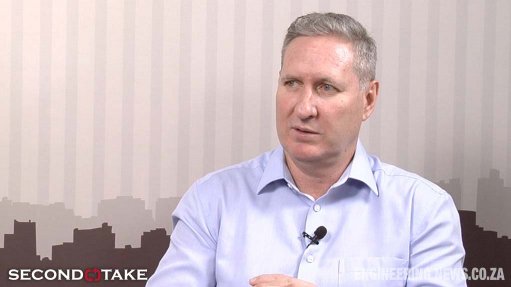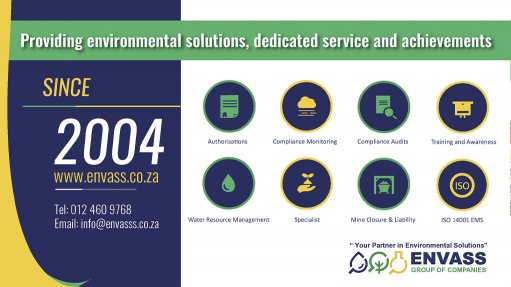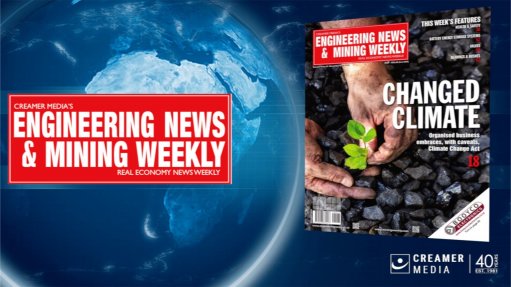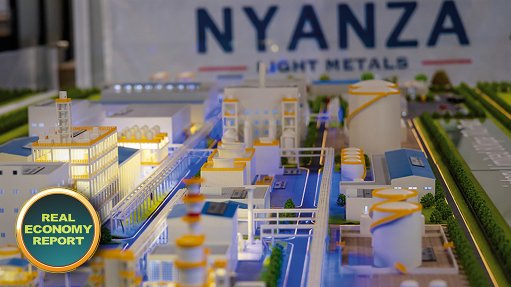Aluminium industry aims to reduce emissions by 80% by 2050
Global industry organisation the International Aluminium Institute (IAI) has published three main pathways that the industry can take to reduce its emissions by 80% by 2050 and meet internationally agreed climate goals, supply demand for primary aluminium that will increase by up to 40% and more than triple recycled aluminium from post-consumer resources to 2050.
The IAI's 'Aluminium Sector Greenhouse Gas Pathways to 2050' report sets out the approaches to emissions reductions for the aluminium industry, in line with the International Energy Agency’s Beyond 2 Degree Scenario. All pathways will be a mix of technologies, including existing, new, underdevelopment and yet-to-be-developed solutions.
Reducing emissions while meeting increasing demand will require huge investment in production technologies, along with commitment from all along the value chain, states the IAI.
In 2018, global demand for aluminium was 95-million tonnes; two-thirds (64-million tonnes) of which was met by primary aluminium (produced from ore) and one-third (31-million tonnes) from recycled aluminium, the report shows.
More than 60% of the aluminium sector’s 1.1-billion tonnes a year of carbon dioxide-equivalent (CO2-e) emissions are from the production of electricity consumed during the smelting process. Decarbonised power generation and the deployment of carbon capture utilisation and storage (CCUS) - the first pathway - offer the most significant opportunity to reduce these emissions to near zero by 2050, the report states.
Two-thirds of the sector’s electricity needs are met by power stations owned and operated by aluminium producers. Most of these are fossil-based and are among the newest and most efficient of the industry’s capacity. Decarbonised power generation and the deployment of CCUS offer the most significant opportunity for emissions reduction for both power-producer consumers and those smelters buying electricity from grids, the IAI says.
The second pathway is to reduce direct emissions. Emissions from fuel combustion make up 15% of the industry's emissions. Electrification, fuel switching to green hydrogen and CCUS offer the most credible pathways. However, process emissions make up a further 15% and require new technologies, such as inert anodes. These emissions and those in transport and raw materials will need to be reduced by 50% to 60% from a business-as-usual (BAU) baseline scenario by 2050.
The third pathway is recycling and resource efficiency that requires increasing collection rates to near 100% and resource efficiency progress by 2050 would reduce the need for primary aluminium by 20% compared with BAU, which will cut the sector's emissions by an additional 300-million tonnes a year of CO2-e. This is second in magnitude only to the first pathway of electricity decarbonisation.
“Infinite recyclability without loss of properties is one of aluminium's unique benefits. The recycling of post-consumer scrap today mitigates the need for almost 20-million tonnes of primary aluminium, avoiding around 300-million tonnes a year of CO2-e," the IAI says in the report.
When recycled metal is not retained in the economy, it is replaced by primary aluminium. Primary production today has a greenhouse gas emissions profile on average 25 times higher than the recovery of recycled metal.
“Aluminium is vital to our society; our homes, workplaces, vehicles, digital devices, packaging, buildings that provide shelter and security rely heavily on aluminium. Aluminium is also integral to global emissions reduction efforts, with solar panels, wind turbines and electric vehicles all depending on it,” says IAI secretary general Miles Prosser.
The IAI has collected and produced information on industry emissions, recently publishing 15 years of emissions data by source and covering all production processes from cradle to gate. This includes all the emissions generated in smelting, as well as those embedded in raw and secondary materials and the energy that the sector consumes.
“This greenhouse gas data and the material flow analysis modelling, which is used to produce robust scenarios for primary and recycled aluminium, underpins the pathways we have unveiled today, which will play a vital role in helping aluminium industry stakeholders choose the necessary actions to achieve global climate goals,” says Prosser.
“Sustainability across the full range of issues is central to aluminium’s future, and reductions in greenhouse gases are a critical component of that.”
Comments
Press Office
Announcements
What's On
Subscribe to improve your user experience...
Option 1 (equivalent of R125 a month):
Receive a weekly copy of Creamer Media's Engineering News & Mining Weekly magazine
(print copy for those in South Africa and e-magazine for those outside of South Africa)
Receive daily email newsletters
Access to full search results
Access archive of magazine back copies
Access to Projects in Progress
Access to ONE Research Report of your choice in PDF format
Option 2 (equivalent of R375 a month):
All benefits from Option 1
PLUS
Access to Creamer Media's Research Channel Africa for ALL Research Reports, in PDF format, on various industrial and mining sectors
including Electricity; Water; Energy Transition; Hydrogen; Roads, Rail and Ports; Coal; Gold; Platinum; Battery Metals; etc.
Already a subscriber?
Forgotten your password?
Receive weekly copy of Creamer Media's Engineering News & Mining Weekly magazine (print copy for those in South Africa and e-magazine for those outside of South Africa)
➕
Recieve daily email newsletters
➕
Access to full search results
➕
Access archive of magazine back copies
➕
Access to Projects in Progress
➕
Access to ONE Research Report of your choice in PDF format
RESEARCH CHANNEL AFRICA
R4500 (equivalent of R375 a month)
SUBSCRIBEAll benefits from Option 1
➕
Access to Creamer Media's Research Channel Africa for ALL Research Reports on various industrial and mining sectors, in PDF format, including on:
Electricity
➕
Water
➕
Energy Transition
➕
Hydrogen
➕
Roads, Rail and Ports
➕
Coal
➕
Gold
➕
Platinum
➕
Battery Metals
➕
etc.
Receive all benefits from Option 1 or Option 2 delivered to numerous people at your company
➕
Multiple User names and Passwords for simultaneous log-ins
➕
Intranet integration access to all in your organisation











